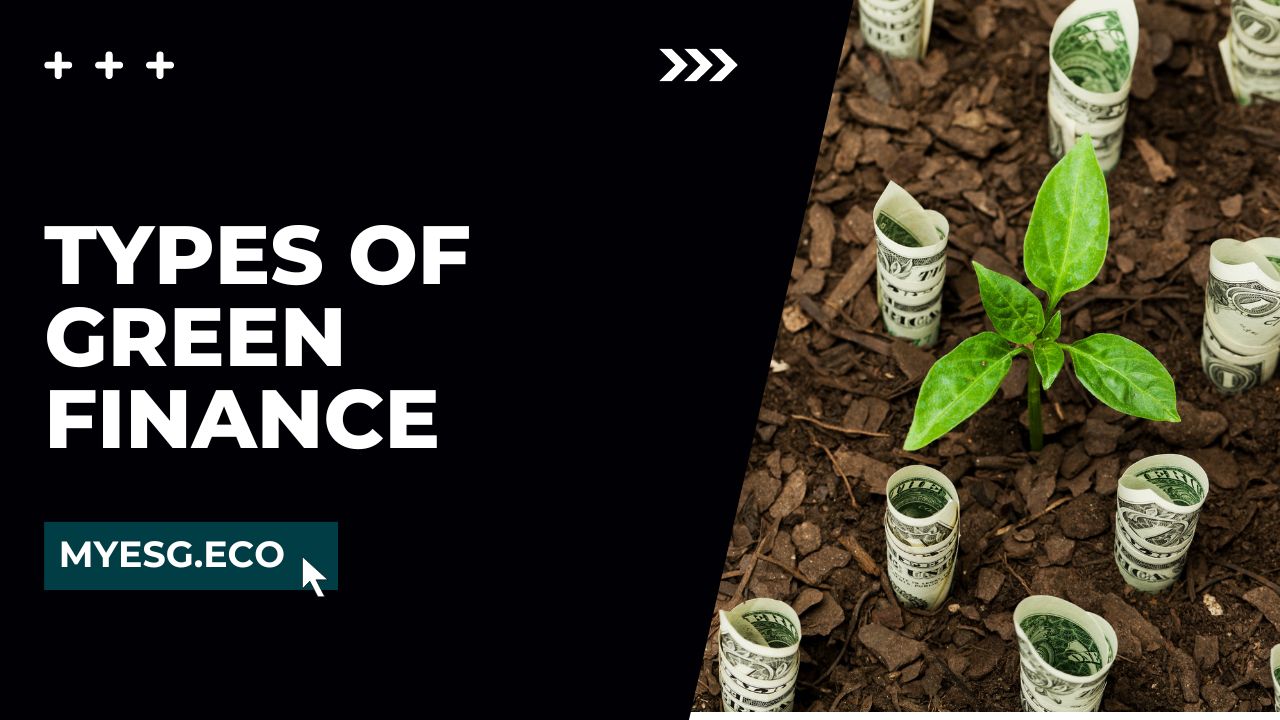Green finance is the new frontier in sustainable investing. From climate-aligned bonds to green loans and impact investing, it’s changing the game for businesses and investors who want to make a positive impact on the planet while generating returns. Join the green finance revolution today.
In this article, we’ll cover the basics of green finance, types of green finance, and how you can get involved. We’ll also cover benefits and challenges of green finance as of today.
Table of Contents
1. Debt-Based Green Finance
Debt-based green finance involves raising capital through debt instruments that are issued to finance environmentally sustainable projects. Here are some additional details about each of the types of debt-based green finance:
Green Bonds
Green bonds are a type of debt instrument that is issued to finance environmentally sustainable projects. The proceeds from the bonds are dedicated to green projects, and the issuer is required to report on the environmental impact of the financed projects.
Green bonds can be issued by governments, corporations, or other entities. The market for green bonds has grown significantly in recent years, with over $300 billion in green bonds issued in 2020.
Green Loans
Green loans are another type of debt-based green finance that is used to finance environmentally sustainable projects. Like green bonds, the projects financed by green loans could include renewable energy infrastructure, energy efficiency upgrades, or clean transportation.
Green loans can be provided by banks or other financial institutions and typically have lower interest rates than conventional loans.

Climate-Aligned Bonds
Climate-aligned bonds are a type of debt instrument that are issued to finance projects that are aligned with the goals of the Paris Agreement to limit global warming to well below 2 degrees Celsius.
These projects could include renewable energy, energy efficiency, or low-carbon transportation. Climate-aligned bonds are similar to green bonds but have a broader focus on reducing greenhouse gas emissions.
Sustainability-Linked Loans
Sustainability-linked loans are a type of debt instrument where the interest rate is linked to the borrower’s performance on environmental, social, and governance (ESG) targets.
The borrower agrees to meet certain sustainability criteria, such as reducing greenhouse gas emissions or improving worker safety, and the interest rate on the loan is adjusted based on the borrower’s performance.
Sustainability-linked loans are a relatively new form of green finance but have grown rapidly in popularity in recent years.
2. Equity-Based Green Finance
Equity-based green finance refers to investments in companies that are focused on environmental sustainability.
Green Equity
Green equity could include investments in companies that produce renewable energy, manufacture energy-efficient products, or work to reduce their carbon footprint.
As investors seek to align their portfolios with their environmental values, green equity has become an increasingly important area of focus.
3. Environmental Risk Management
Environmental risk management is an important aspect of green finance, and green insurance is one way to address environmental risks.
Green Insurance
Green insurance refers to insurance products that cover environmental risks, such as damage to renewable energy infrastructure due to natural disasters.
Green insurance can help to mitigate the financial risks associated with environmental projects and protect investors and businesses from losses due to environmental events.
As the current threat of climate change continues to grow, green insurance is becoming an increasingly important tool for managing environmental risk.
4. Emissions Trading and Carbon Offsetting
Emissions trading and carbon offsetting are important mechanisms for reducing greenhouse gas emissions and addressing climate change.
Carbon Offsets
Carbon offsets are a type of emissions trading instrument that represents a reduction in greenhouse gas emissions. They can be purchased by companies or individuals to offset their own emissions, with the funds from the purchase going towards a project that reduces emissions elsewhere.
Carbon offsets can be used to help businesses achieve carbon neutrality or to comply with regulations that limit greenhouse gas emissions. While carbon offsets are not a silver bullet for addressing climate change, they can be an important tool for reducing emissions and promoting sustainable development.

5. Impact Investing
Impact investing is a type of investing that aims to generate positive social or environmental impact, as well as financial returns.
Social Impact Investing
Social impact investing focuses on investments that generate positive social impacts, such as affordable housing, access to education, or community development.
Environmental Impact Investing
Environmental impact investing focuses on investments that generate positive environmental impacts, such as renewable energy, energy efficiency, or sustainable agriculture.
Impact investing has become increasingly popular in recent years as more investors seek to align their portfolios with their values and make a positive impact on the world.
Impact investing has the potential to drive positive change in society and the environment while also generating financial returns.
Benefits of Green Finance
Green finance offers a range of benefits for investors, businesses, and society as a whole. Here are some of the key benefits of green finance:
Challenges of Green Finance
While green finance offers many benefits, there are also several challenges that need to be addressed. Here are some of the key challenges of green finance:
Conclusion
Green finance is a powerful tool for driving positive environmental and social impact while generating financial returns. By promoting investments in environmentally sustainable projects, green finance can help to mitigate the impacts of climate change, reduce environmental risk, and drive innovation.
However, green finance also faces a range of challenges, including a lack of standardization, a limited supply of green products, and cost and complexity.
To address these challenges and unlock the full potential of green finance, collaboration between governments, businesses, investors, and other stakeholders will be essential.
By working together, we can build a more sustainable and low-carbon economy that benefits everyone.
References:
- ESG Glossary of Terms – AEI Consultants. https://aeiconsultants.com/resource-center/esg-glossary-of-terms/
- Port Blakely Companies | Addressing Climate Change. https://portblakely.com/port-blakely/addressing-climate-change
- What is ESG? An Environmental, Social and Governance Guide. https://corpseedgroup.blogspot.com/2023/02/what-is-esg-environmental-social-and.html
- Climate Bonds Initiative: https://www.climatebonds.net/
- Global Impact Investing Network: https://thegiin.org/
- Green Finance Initiative: https://www.greenfinanceinitiative.org/
- Principles for Responsible Investment: https://www.unpri.org/
- United Nations Environment Programme Finance Initiative: https://www.unepfi.org/

